Introduction
The energy utility sector is undergoing a profound transformation, driven by the need to streamline operations and embrace digital solutions. This shift is not only about enhancing efficiency but also about adopting innovative technologies that enable intelligent management of energy distribution. With the introduction of sophisticated systems like GLOW, utility engineers can gather essential data and analyze the impact of new energy resources on grid reliability and sustainability.
This move towards automation represents a significant step towards modernization and cost-effective energy management. However, the traditionally conservative nature of the utility industry has hindered the adoption of advanced energy technologies. Nevertheless, pioneering companies like Bosch are integrating digital twins with their solid oxide fuel cell systems, enabling real-time visualization and monitoring for optimized performance.
The commitment to operational efficiency and cutting-edge technologies is driven by economic and market forces, such as global trade tensions and evolving government regulations. Strategic operational streamlining and investment in energy efficiency not only address immediate challenges but also align with long-term sustainability goals, such as the Net Zero Emissions by 2050 Scenario. Energy utilities must navigate a complex landscape of risks, including supply chain disruptions and fluctuating fuel costs.
By embracing digital solutions and focusing on energy efficiency, utilities can improve operational processes and contribute to a more resilient and sustainable energy future.
The Need for Streamlining Operations in Energy Utilities
Optimizing operations within the energy utility sector is not just a matter of enhancing efficiency—it's about embracing innovation and digital transformation. By leveraging sophisticated technologies such as GLOW, a system that automatically gathers essential data, utility engineers can swiftly analyze how new energy resources will affect grid reliability and sustainability. This shift from manual, time-consuming processes to automated solutions represents a significant step towards modernization, where the focus is on cost-effective and intelligent management of energy distribution.
In the historically conservative utility industry, motivated by a guaranteed rate of return on hefty capital investments, there is often little financial incentive to adopt advanced energy technologies (Gets) or energy efficiency measures. However, emerging trends show that companies like Bosch are pioneering change by integrating digital twins with their solid oxide fuel cell (SOFC) systems. These digital counterparts enable real-time visualization and monitoring, optimizing both cost and performance throughout the system's lifespan.
The commitment to operational efficiency and the adoption of cutting-edge technologies is not just about meeting the immediate demands of energy distribution; it's also a strategic response to broader economic and market forces. Factors such as global trade tensions, changes in economic conditions, and evolving government regulations necessitate a nimble and resilient approach to energy management. For instance, the current energy crisis has governments re-evaluating energy policies with a heightened urgency, emphasizing the need to reduce dependence on high-priced fossil fuels while protecting consumers from soaring energy bills.
Strategic operational streamlining, coupled with an investment in energy efficiency, can significantly reduce energy demand across all sectors. This dual approach not only addresses immediate operational challenges but also aligns with long-term sustainability goals, such as the Net Zero Emissions by 2050 Scenario, which underscores the critical role of energy efficiency in mitigating the impacts of climate change.
Energy utilities are now in a position where they must navigate a complex landscape of risks, including supply chain disruptions, fluctuating fuel costs, and regulatory changes. By embracing digital solutions and focusing on energy efficiency, they can not only improve their operational processes but also contribute to a more sustainable and economically resilient energy future.
Key Areas for Operational Improvement
To enhance operational excellence, energy utilities need to prioritize specific areas for enhancement. Infrastructure Management is paramount, with a focus on the meticulous upkeep and governance of energy production facilities and transmission networks. Embracing robust asset management strategies is fundamental, as it curtails downtime, amplifies reliability, and streamlines the utilization of resources. For instance, the GLOW initiative exemplifies how automation in acquiring grid information can significantly diminish the time and expense associated with grid analysis, thereby enhancing efficiency and reliability of the distribution system.
Workforce Optimization is another critical aspect, where utilities must synchronize workforce planning, training, and performance management with the operational requisites. This harmonization is instrumental in augmenting productivity while concurrently reducing operational expenditures. Luz Aviles from OUC emphasized the importance of interpreting data analytics for actionable insights, illuminating the necessity for dedicated resources to discern and act upon significant data.
In the realm of Technology Integration, utilities are compelled to adopt progressive digital solutions, such as smart grids and predictive analytics, to refine operational efficiency and minimize energy wastage. AEP's shift over 15 years from traditional meter reading to advanced workforce management systems underscores the transformative potential of technological integration.
Regulatory Compliance remains a critical factor, as utilities navigate a landscape fraught with regulatory mandates to ensure safety and sustainability. Proactive regulatory adherence precludes penalties and reputational damage while safeguarding operations.
Real-time monitoring of the energy transmission and distribution lines is essential. It empowers data-driven decision-making, optimizes grid capacity, and prevents overload scenarios. The importance of such monitoring is underscored by the Federal Energy Regulatory Commission's (FERC) Order 881, which mandates transparency in asset usage.
Amidst the post-pandemic era, energy and utility companies must embody agility and resilience. The triple squeeze of economic pressures, talent scarcity, and supply chain issues necessitates rapid adaptation. The lack of readily available data impedes this agility, as pointed out in the Advanced Distribution Management System's capability to simulate investments and deployments, enhancing grid design.
The aforementioned strategies are buttressed by statistical evidence. Robert Kaineg's analysis, presented in an EPSA webinar, accentuates the importance of understanding the full-cycle levelized cost of electricity (LCOE) for resource integration. Meanwhile, Alberta's recent Net-Zero Emissions Pathways Report highlights the costs and mitigative strategies associated with transitioning to net-zero emissions.
In conclusion, the path to operational excellence for energy utilities is multifaceted, demanding meticulous management of infrastructure, workforce, technology, and regulatory compliance, underscored by a reliance on real-time data and monitoring for proactive decision-making.
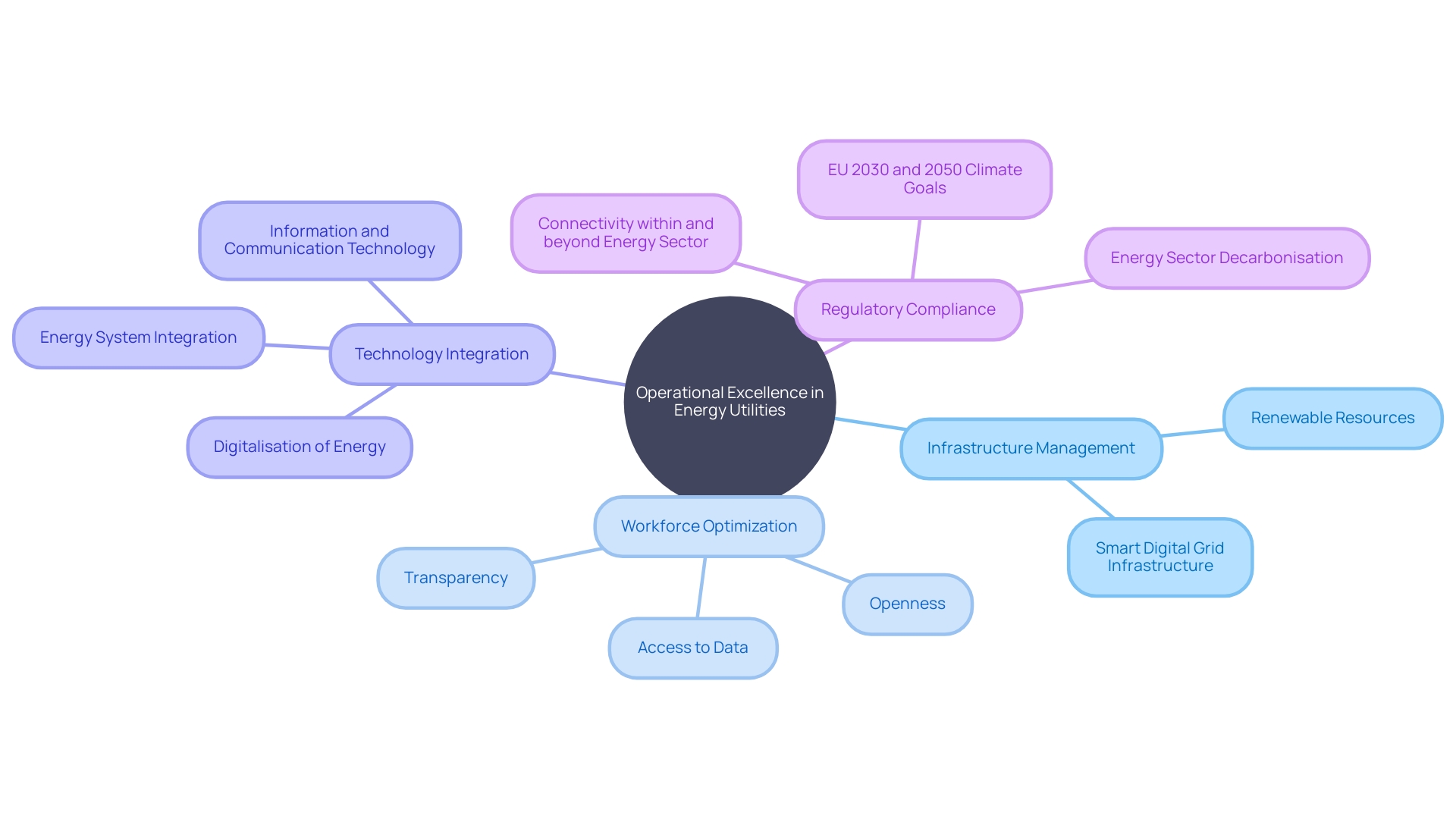
Customer Experience and Engagement
Enhancing customer experience is pivotal for the success of energy utilities, and a proactive approach can significantly bolster customer satisfaction and brand reputation. For instance, EDF, a leading energy generator in France, exemplifies excellence through its open data portal initiative, which democratizes data access and fosters transparent communication about performance indicators. This move has facilitated informed public discourse on the company's operations, underscoring the importance of transparency in customer relations.
To further improve customer experience, utilities must adopt a multi-faceted strategy:
-
Transparent and Timely Communication: Clear communication is indispensable. For example, the EDF open data portal initiative allows customers to understand energy and environmental concerns better, setting a standard for managing customer expectations and trust.
-
Convenient Service Channels: Offering multiple service channels, such as online portals and mobile apps, caters to customer convenience. This aligns with industry trends, where ease of access to services is a significant driver of customer satisfaction.
-
Proactive Issue Resolution: The Orlando Utilities Commission (OUC) found that customer analytics requires significant data interpretation. Luz Aviles, Vice President of Customer Experience and Sales at OUC, emphasizes the necessity of dedicated resources to analyze data and catalyze actionable insights, underscoring the importance of swift issue resolution to maintain customer satisfaction.
-
Personalized Services: Personalization can be achieved through data analytics, as demonstrated by OUC's efforts to identify and communicate with customers about high consumption and other issues. This can lead to enhanced customer satisfaction, as utilities can tailor services to individual needs and preferences.
The Power 2023 Electric Utility Residential Customer Satisfaction Study revealed a decline in customer satisfaction, with many customers unaware of rate increases. Such findings highlight the need for utilities to maintain transparency, especially concerning pricing, to prevent erosion of customer trust.
In summary, a commitment to customer-centric strategies, informed by robust analytics and transparent communication, is the cornerstone of enhancing customer experience in the energy utility sector.
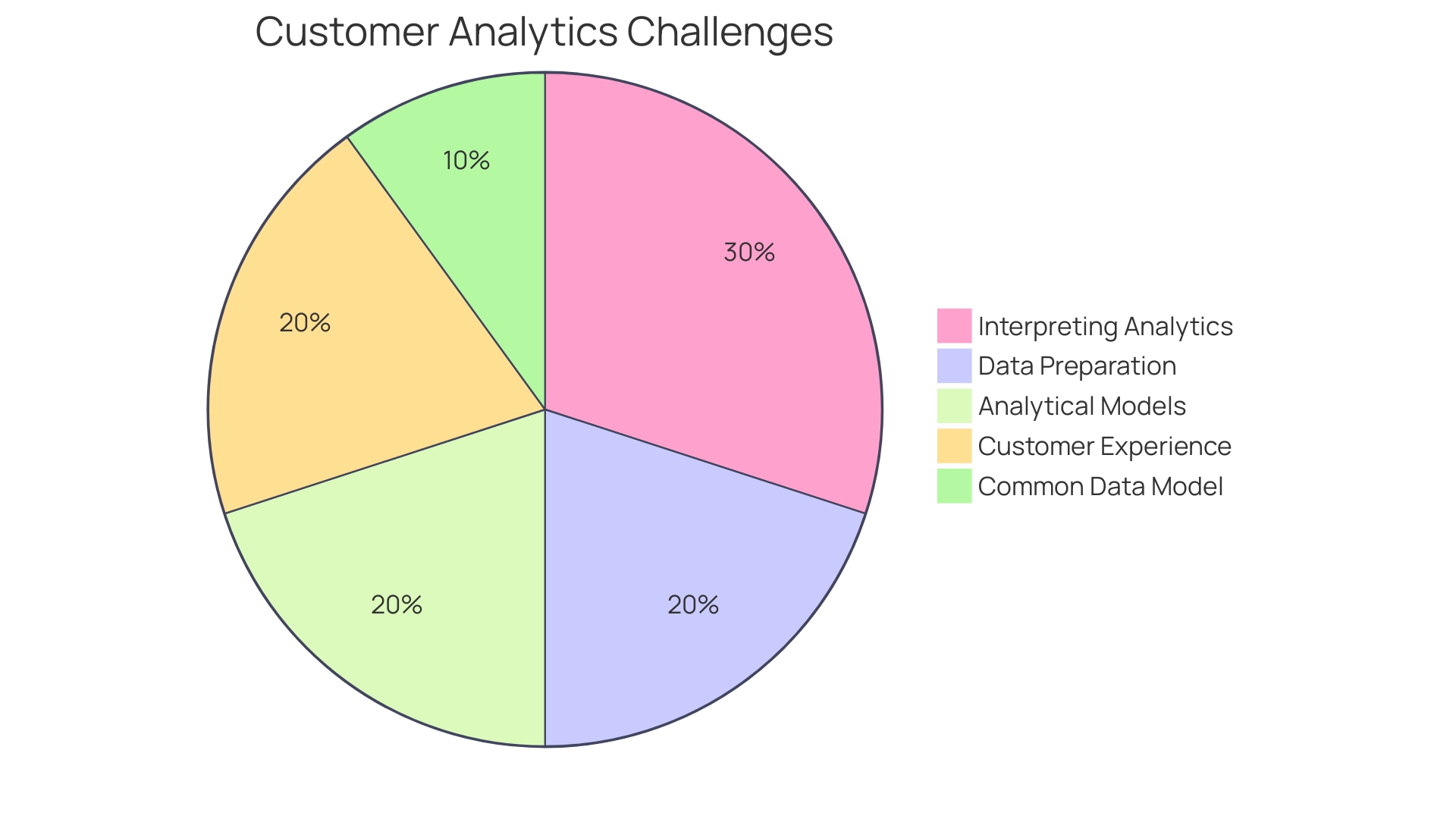
Operational Excellence and Automation
To achieve operational excellence, energy utilities are increasingly turning to automation to refine processes, reduce costs, and enhance overall performance. Automation's role is multifaceted, touching on various aspects of utility management.
For instance, automated meter reading and billing systems have proven to be game-changers in efficiency and accuracy. American Electric Power's adoption of a Windows-based wireless solution for route control and meter reading in 1996 marked the early stages of such innovation. By replacing manual, paper-based processes, AEP's initiative demonstrated the potential for significant improvements in operation speed and accuracy.
Maintenance and asset management are other areas where automation makes a significant impact. Using technology to schedule and track maintenance activities facilitates timely inspections and preventive measures, ensuring optimal allocation of resources and infrastructure longevity. The insurance company Hiscox's implementation of an automated system, which reduced repetitive email workload by 28% and improved response times, illustrates the broader applications of automation in customer service and operational management.
Energy management systems are integral for monitoring and optimizing energy usage. By providing real-time data, these systems enable utilities to pinpoint inefficiencies and implement corrective measures to save energy. The integration of AI into these systems is transforming how grid operators manage operations, as noted by Feng Qiu of Argonne National Laboratory. AI aids in understanding current conditions, making informed decisions, and predicting potential problems.
Furthermore, the customer service realm has seen a surge in automation through self-service portals, automated notifications, and smart chatbots, which manage routine inquiries and free up resources for more complex customer issues. The transformative potential of AI in enhancing customer interactions and achieving higher satisfaction levels is undeniable, as is its growing role in infrastructure maintenance and balancing the supply and demand of energy.
With the United Nations’ Sustainable Development Goal 7 emphasizing energy efficiency, the global shift towards renewable energy sources is also a testament to the importance of adopting smart technologies. Automation and AI are pivotal in navigating the complexities of today's energy landscape, ensuring sustainable growth while maintaining resilience in the face of economic pressures, talent scarcity, and supply-chain challenges.
In conclusion, for energy utilities, the pursuit of operational excellence through automation is not just a trend but a strategic imperative. By adopting these technologies, utilities can ensure they remain competitive and capable of meeting the evolving demands of the energy sector.
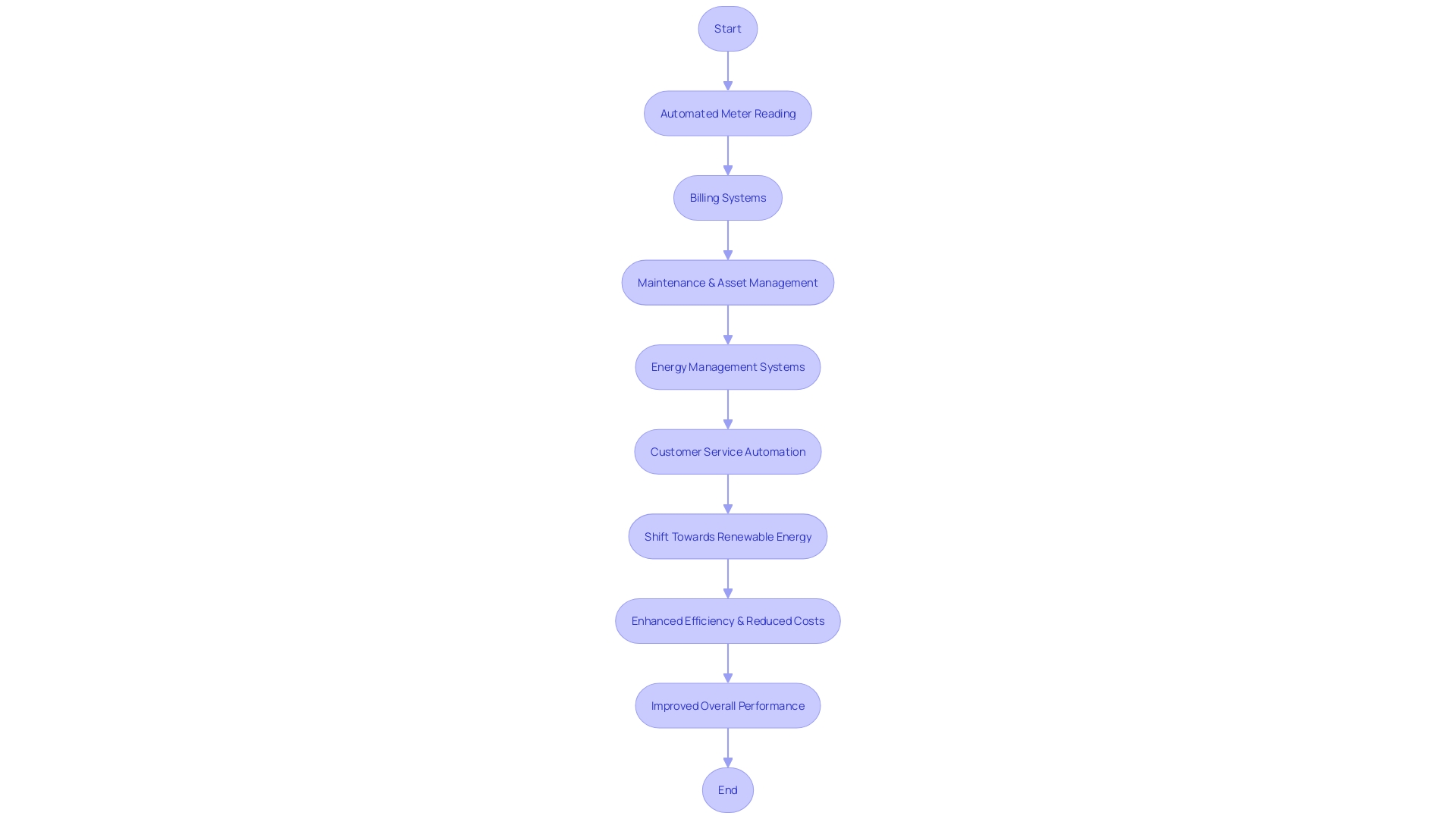
Data, Analytics, and AI in Energy Utilities
The integration of artificial intelligence (AI) into energy utility operations is revolutionizing the industry, enhancing efficiency and reliability. AI and machine learning algorithms provide rapid, in-depth analysis of massive data sets, helping utilities optimize their systems and make better decisions. For instance, AI-driven predictive maintenance allows for the anticipation of equipment failures, reducing costly unplanned outages. By analyzing consumption patterns, these advanced technologies enable accurate demand forecasting, improving energy supply strategies.
Smart Building Automation Systems (BAS), which leverage data analytics and sensors, can lead to energy savings of 8% to 15% by automatically adjusting systems like lighting and HVAC based on real-time data. The application of AI in grid optimization is equally transformative; it analyzes grid data to pinpoint issues such as congestion and voltage fluctuations, enhancing the grid's performance and resilience.
Furthermore, the use of AI extends to the design and integration of new energy resources into the grid. Sophisticated simulation software and digital twin models allow for the precise assessment of the grid's capacity to handle new additions, streamlining project design and permitting processes. These models represent a leap forward in simulating mechanical integrity and ensuring the longevity of infrastructure.
Notably, the rise of Big Data and advancements in compute power have expanded the capabilities of AI in the energy sector. The promise of generative AI lies in creating new solutions and optimizing existing processes, ultimately reducing energy consumption and environmental impact. As such, AI serves as a catalyst for utilities to automate operations, reduce costs, and achieve greater efficiency, all while adhering to the highest standards of service delivery to their customers.
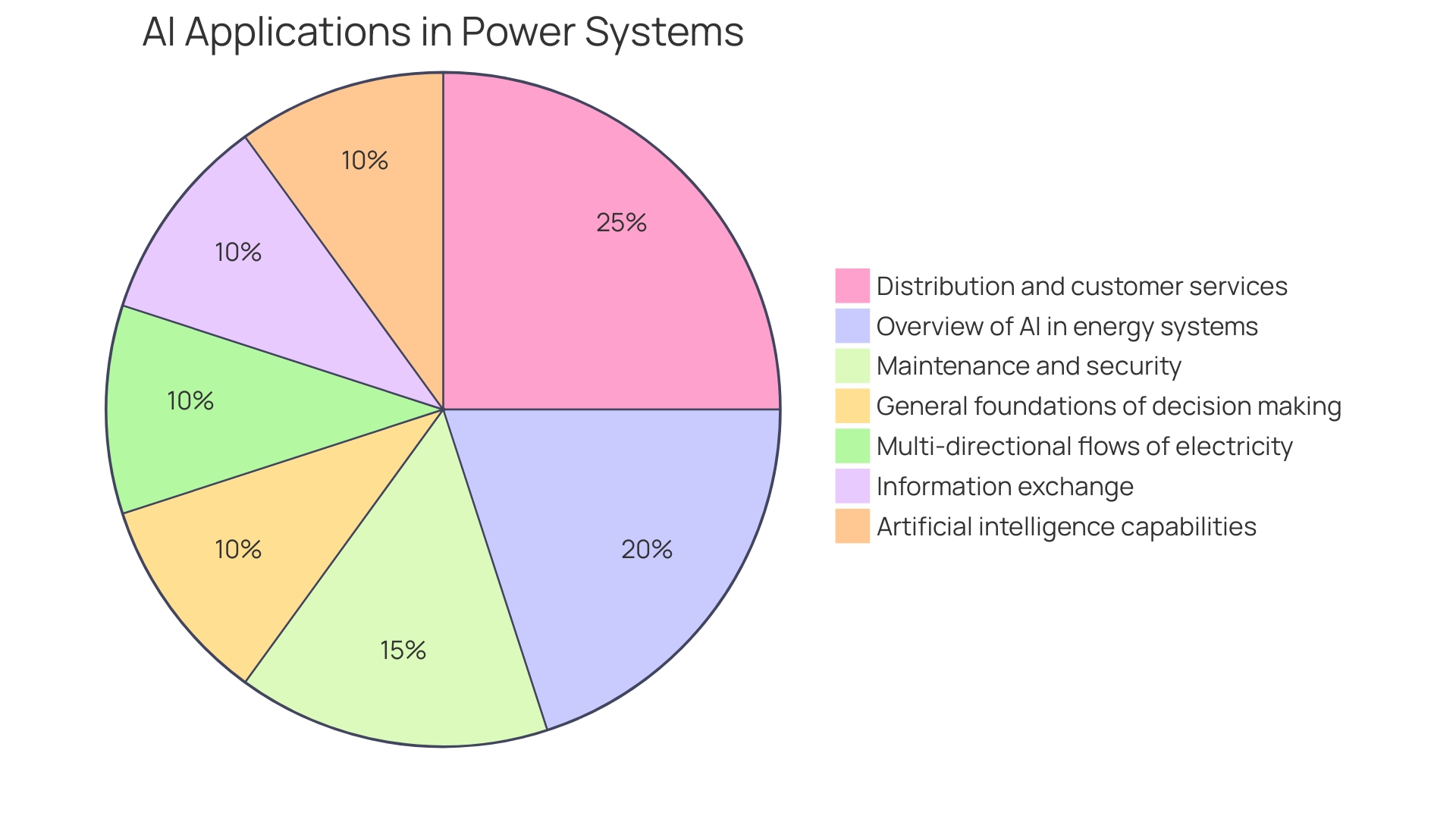
Energy Efficiency and Decarbonization Strategies
Energy utilities are at the forefront of a transformative era, where the integration of renewable energy, demand response programs, energy storage solutions, and energy efficiency incentives are essential components in achieving sustainability objectives.
-
Renewable Energy Integration: Utilizing renewable energy sources like solar and wind power is more than an environmental imperative; it's a strategic investment. With the power domain undergoing a significant transformation to support mobility, industry, and building domains, energy utilities have the opportunity to pivot towards clean energy sources, thereby reducing emissions and fostering a sustainable energy ecosystem.
-
Demand Response Programs: Demand response initiatives serve as a critical tool for utilities to manage the ebb and flow of energy consumption, particularly during peak times. These programs not only help in maintaining grid stability but also play a pivotal role in mitigating the need for new generation resources, ultimately leading to conservation of energy.
-
Energy Storage Solutions: The integration of energy storage systems is a game-changer for utilities. It allows for the harnessing of surplus energy during periods of low demand and its redistribution when demand spikes. This not only enhances grid resilience but also complements the variable nature of renewable energy sources.
-
Energy Efficiency Incentives: Energy utilities can lead by example in promoting energy conservation by offering incentives that encourage customers to embrace energy-saving practices and technologies. From rebates on energy-efficient appliances to support for comprehensive energy upgrades, these measures can significantly reduce operational costs and contribute to a reduction in greenhouse gas emissions.
The pursuit of these strategies is underscored by the need for a more robust and nuanced approach to energy efficiency, aptly termed 'Energy Efficiency 2.0'. This new paradigm involves a multi-faceted effort, including electrification, flexibility, wise use of hydrogen, and sector integration, to redefine energy efficiency in the context of a renewable-powered grid.
Amidst this backdrop, recent developments have highlighted the urgency and complexity of the energy transition. British Wind Power, despite economic challenges, has set new records, and BP Inc.'s commitment to achieving net-zero by 2050 through significant production cuts is testament to the evolving landscape. However, challenges persist, such as the gender disparity in green jobs and the shipping industry's struggle to align with emissions standards.
The global energy crisis has prompted a reevaluation of energy efficiency targets, emphasizing the critical role energy-efficient technologies play in curbing fossil fuel consumption across various sectors. The rate of improvement in global energy intensity is pivotal to stay aligned with the Net Zero Emissions by 2050 Scenario. Experts like Eric Cutter of E3 and Mike Specian of ACEEE are contributing to the discourse on distributed resources, energy storage, and the potential of energy efficiency in climate change mitigation.
In this transformative journey, energy utilities are not just participants but significant drivers of change, steering the world towards a more sustainable and efficient future.
Case Study: Successful Transformation in Energy Utilities
The transformation of utility operations is a complex but essential endeavor, as evidenced by the case of XYZ Energy. Through their collaboration with a consulting firm, XYZ Energy took a strategic approach to enhance their infrastructure management. The firm's comprehensive assessment of existing operations paved the way for the optimization of asset management, leading to increased reliability and reduced maintenance costs. The deployment of advanced analytics tools played a pivotal role in grid optimization, enabling real-time identification of potential grid failures and preemptive action to avert outages.
Moreover, the integration of a customer engagement platform marked a significant advancement in customer relations, offering personalized communication and self-service features that contributed to elevated customer satisfaction and decreased call center volumes. The successful partnership between XYZ Energy and the consulting firm not only streamlined operations but also yielded substantial operational savings and customer service improvements.
As the energy sector evolves, the significance of such transformations cannot be overstated. The modernization of energy utilities is fundamental to the broader energy transition, requiring a multifaceted approach that encompasses the power domain, mobility, industry, buildings, and support enablers like raw materials, new fuels, and carbon and energy reduction strategies.
This holistic transformation is underscored by the pressing need for reliability in the electricity grid, as highlighted by recent insights on the decline in reserve margins and the five critical threats to reliability: energy policy, grid transformation, resilience to extreme events, security risks, and critical infrastructure interdependencies. Utility companies are now facing an unprecedented challenge to adapt and innovate, with advanced research showing that over 40% of smart grid innovation is concentrated in global metropolitan hubs like Tokyo, Seoul, and Beijing.
In this context, consulting services prove invaluable in navigating the complex landscape of utility management and land acquisition, particularly for companies seeking to mitigate the risks associated with catastrophic events like wildfires and to engage with evolving safety standards and economic tradeoffs. The expertise offered by consultants enables utility companies to proactively address these challenges, ensuring a secure, resilient, and customer-focused future for the energy industry.
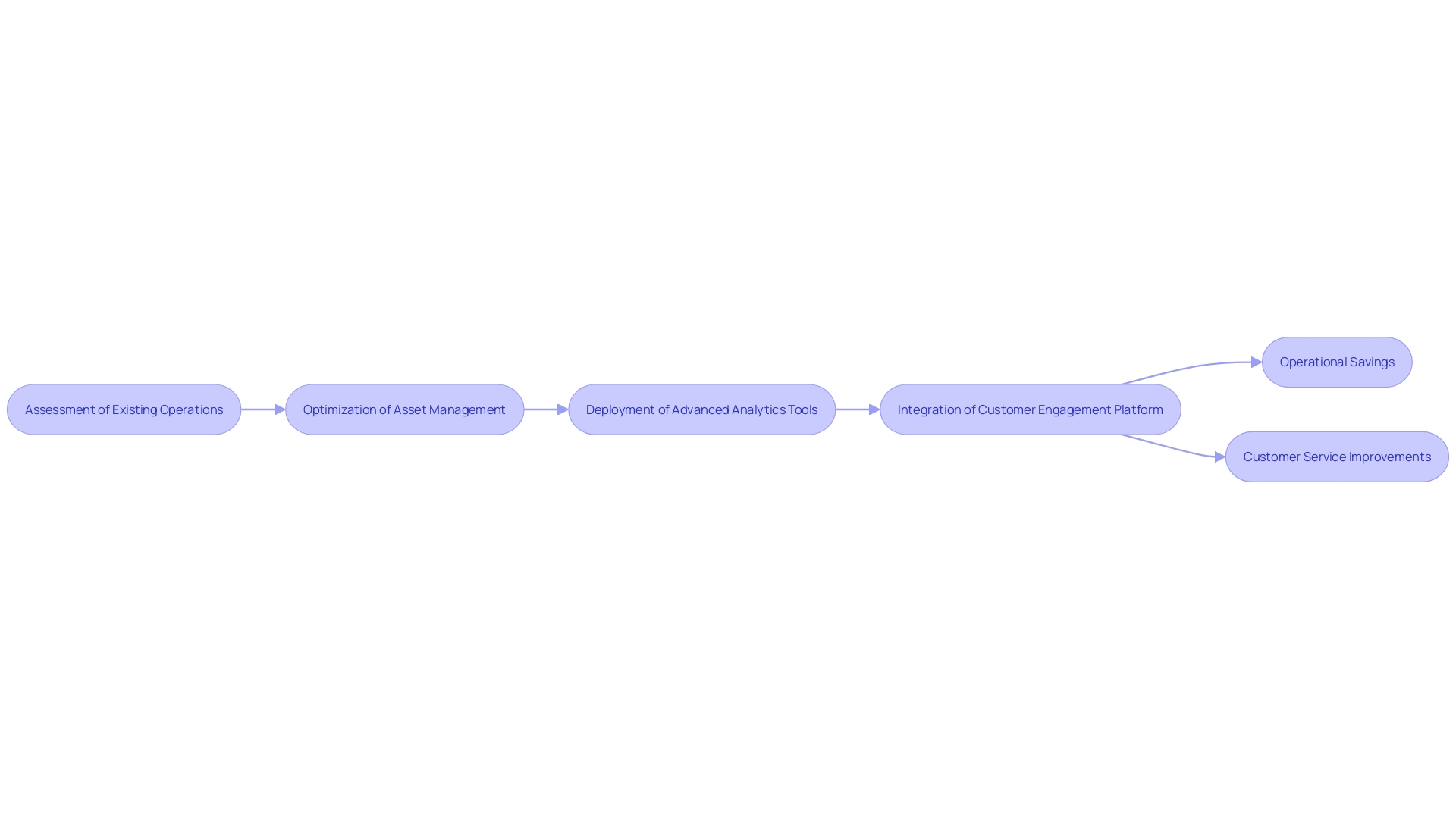
Implementing Digital Solutions for Enhanced Operations
Embracing digital technologies has become a cornerstone for the transformation of energy utilities, leading to remarkable enhancements in operational efficiency, cost reduction, and customer satisfaction. Here's an in-depth look at some innovative digital solutions that are reshaping the utility landscape:
-
Smart Grids: These advanced systems marry traditional power grid components with digital communication and control technologies. The integration allows for real-time monitoring and management of grid operations, more efficient energy distribution, and quicker outage response, aligning with Schneider Electric's mission to bridge progress and sustainability.
-
Advanced Metering Infrastructure (AMI): AMI systems provide utilities with precise, timely data on energy usage. This critical consumption data feeds into demand forecasting, improves billing accuracy, and helps identify opportunities for energy efficiency.
-
Internet of Things (IoT): IoT devices are revolutionizing the monitoring and management of utility operations. From tracking equipment performance to detecting pipeline leaks and optimizing energy use in buildings, IoT expands the capabilities of utilities to ensure sustainable and efficient energy management.
-
Digital Customer Engagement: Digital channels are enabling utilities to deepen customer engagement. Through mobile applications, customers can conveniently pay bills and report outages, while online portals offer account management and service adjustments. This proactive digital communication fosters transparency and drives customer loyalty, as evidenced by HanseWerk's success in enhancing customer relationships through digital solutions.
These digital advancements are not only facilitating streamlined operations but also contributing to the industry's sustainability efforts. Bosch's creation of solid oxide fuel cell (SOFC) systems with digital twins exemplifies the synergy between digital innovation and green energy solutions. The digital twin technology supports the SOFC systems by visualizing and monitoring process parameters, optimizing costs and performance over the asset's lifecycle, ultimately making energy production more efficient and accessible.
As the utility sector navigates the trilemma of providing secure, affordable, and sustainable energy, the integration of digital solutions becomes increasingly crucial. With the industry's focus on increasing grid capacity and integrating distributed energy resources (DERs), these digital strategies are pivotal in managing the complexities of a dynamic grid. The Trusted Energy Interoperability Alliance (TEIA) is one such initiative, setting global security and interoperability standards to build a more sustainable and interoperable energy system.
Moreover, data management has emerged as a key component in enhancing grid visibility and active management. With a vast amount of data generated daily, utilities are leveraging this data to improve grid reliability, sustainability, and operational efficiency. For instance, simulation software enables engineers to model and assess the grid's capacity to support new energy resources, facilitating the design and permitting of new projects.
In conclusion, digitalization is not merely an option but a necessity for energy utilities aiming to thrive in an increasingly digital world. By adopting these solutions, utilities are not only elevating their service quality but also contributing to the global pursuit of a sustainable, efficient, and customer-centric energy ecosystem.
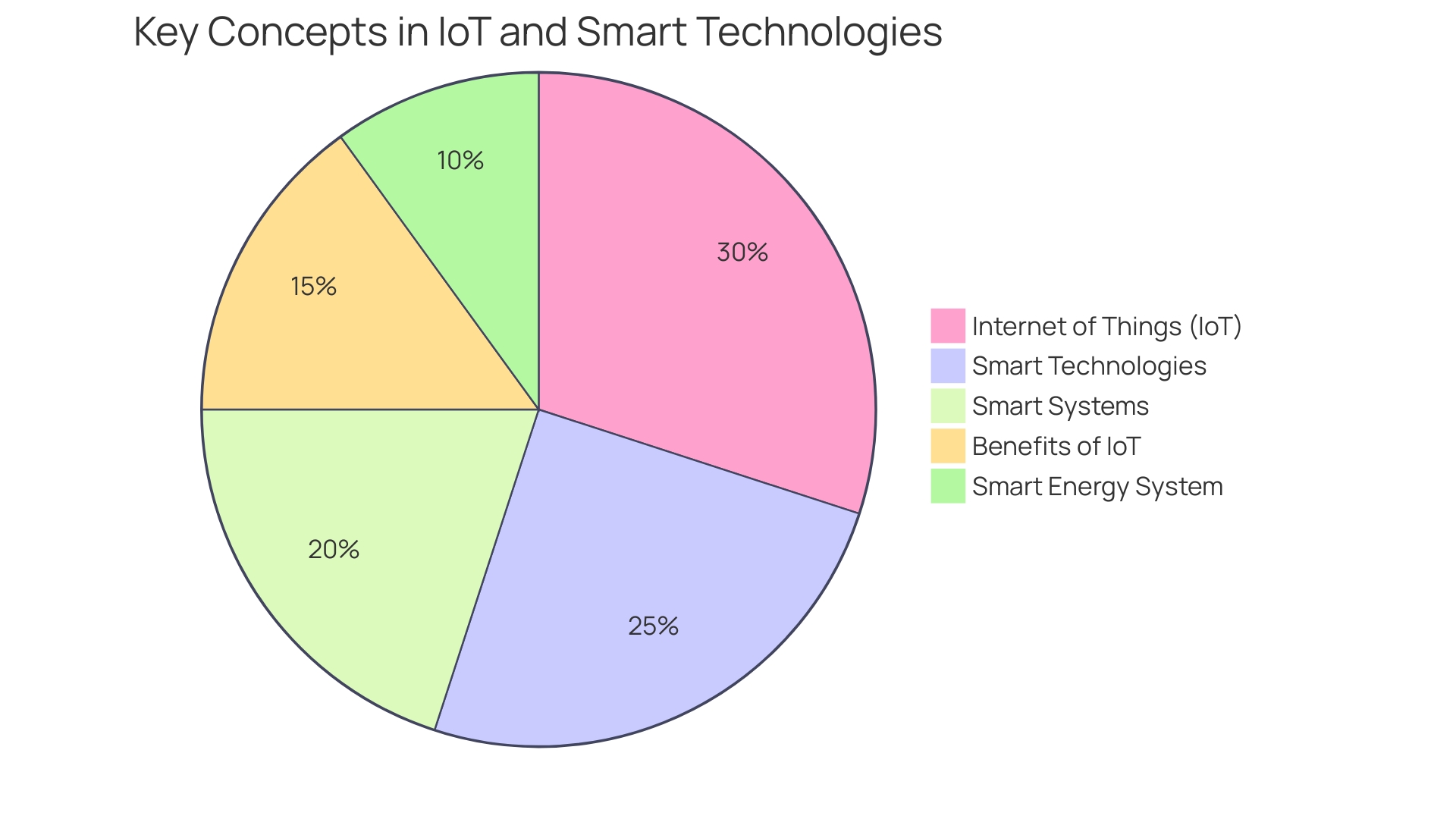
Benefits of Consulting Services in Energy Utilities
Consulting firms bring a wealth of benefits to energy utilities seeking to address the multifaceted challenges within the industry. These firms offer a suite of advantages, including:
-
Industry Expertise: With specialized knowledge in energy and utilities, consultants provide strategic insights, helping utilities improve operational efficiency and explore new opportunities for growth.
-
Objective Analysis: Consultants conduct data-driven evaluations of utility operations, pinpointing areas for enhancement and devising customized solutions without bias.
-
Facilitating Change: The transition to new operational models can be intricate. Consultants guide utilities through change management, ensuring minimal disruption and a seamless shift to new processes.
-
Operational Cost Efficiency: By optimizing utility operations, consultants can unlock significant savings, leading to long-term financial benefits.
-
Customer Experience Improvement: Enhanced operational procedures and engagement strategies advised by consultants can substantially elevate the customer experience, fostering greater satisfaction and loyalty.
Consulting services thus emerge as a pivotal force in refining utility operations, embracing technological advancements, and utilizing analytical tools to foster sustainable, customer-focused, and economically sound energy solutions.
Case studies, such as the implementation of GLOW, illustrate the transformative impact consulting can have by automating grid analysis and streamlining communication between engineers and stakeholders. Such advancements enhance the ability to manage the grid effectively, thereby supporting the goals of organizations like Sustainable Energy for All (SEforALL), which aims for universal sustainable energy access by 2030.
In the context of renewable energy, insights from the POWER UP pilots exemplify how consulting can assist local administrations in adopting solar and wind projects. These projects spotlight the practical benefits consulting services provide in navigating the economic, technical, and legal aspects of renewable energy installations.
As noted in recent news and reports, energy is critical for industries such as data centers. With energy costs on the rise and the potential risk of assets becoming stranded due to power-intensive operations, consulting plays a crucial role in advising on efficiency upgrades and sustainability practices.
Furthermore, consulting firms like IBM Consulting are deeply engaged in advancing sustainability through various services, including data and reporting, supply chain management, and clean energy transition, demonstrating the comprehensive scope of consulting in today's energy landscape.
The push towards renewable energy sources, including solar and wind, is a testament to the affordability and reliability of clean energy. As utilities work to build consumer trust and comply with regulatory standards, consultants offer valuable assurance mechanisms to maintain service quality and adherence to market rules.
With the current global focus on energy security, affordability, and sustainability, the role of consulting firms becomes even more instrumental in guiding utilities towards a net-zero future, as evidenced by the growth in renewable energy and electric vehicles.
In conclusion, the dynamic relationship between consulting services and energy utilities is integral to addressing today's energy challenges and driving the transition towards a sustainable and efficient energy future.
Conclusion
The energy utility sector is undergoing a significant transformation driven by automation and digital solutions. Companies like Bosch are integrating digital twins with their fuel cell systems, enhancing performance and sustainability. This commitment to advanced technologies aligns with long-term goals and economic forces.
To achieve operational excellence, energy utilities must prioritize infrastructure management, workforce optimization, technology integration, and regulatory compliance. These areas improve reliability, reduce costs, and ensure safety and sustainability.
Enhancing customer experience is crucial. Transparent communication, convenient service channels, proactive issue resolution, and personalized services foster satisfaction and loyalty. Digital solutions play a vital role in improving overall experience.
Automation is key to operational excellence. AI and automation optimize processes in meter reading, maintenance, energy management, and customer service, enhancing efficiency and reliability.
The integration of AI revolutionizes energy utility operations, enhancing efficiency and reliability. AI-driven algorithms enable better decision-making and accurate demand forecasting, optimizing grid performance.
Energy utilities play a vital role in achieving sustainability objectives. Embracing renewable energy, implementing demand response programs, integrating energy storage, and promoting efficiency contribute to a sustainable energy ecosystem.
Consulting firms offer expertise, objective analysis, change facilitation, cost efficiency, and customer experience improvement. They refine operations, embrace technology, and provide sustainable solutions.
Embracing digital technologies is crucial. Smart grids, advanced metering infrastructure, IoT devices, and digital customer engagement platforms streamline operations and contribute to sustainability.
In conclusion, energy utilities must embrace automation, digitalization, customer-centric strategies, and sustainability initiatives to achieve operational excellence. By optimizing operations, prioritizing customer experience, and leveraging advanced technologies, utilities navigate the energy landscape and contribute to a resilient, sustainable, and customer-centric energy future.




